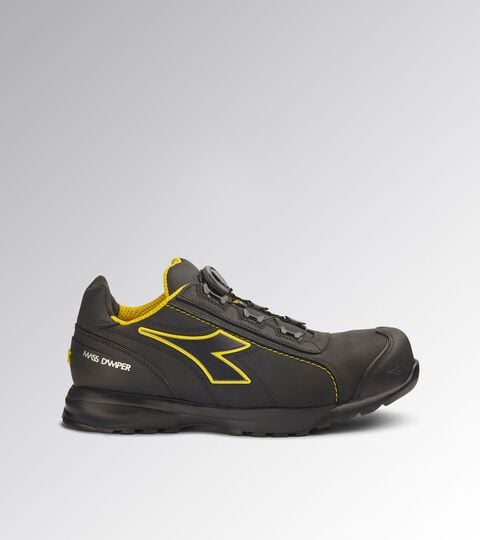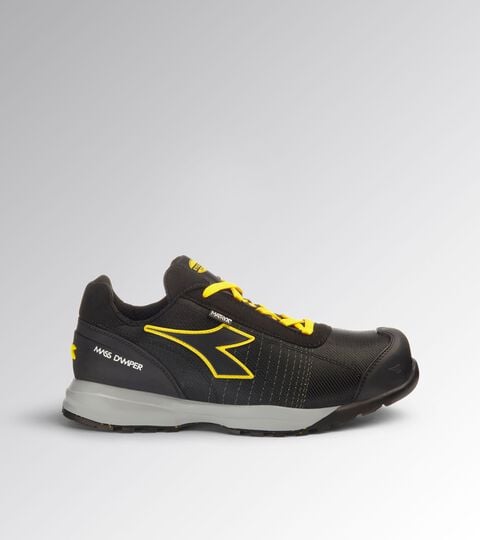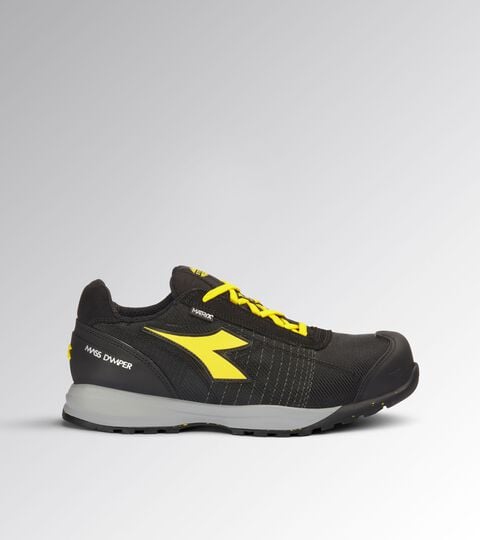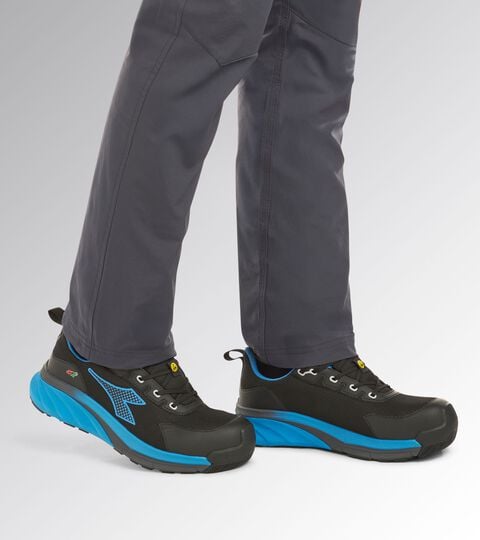ESD Safety Shoes & Work Boots
(83 Results)The code ESD identifies safety shoes that, as an optional requirement, provide protection against electrostatic charges. ESD stands for “Electro-Static Discharge”, which is a discharge of static energy from one body to another. An ESD discharge can have a high value, but usually does not exceed 5,000 volts. However, in some workplaces, even small discharges can pose a risk: for example, they can cause fires when working with flammable liquids or gases, or they can damage sensitive electrical components - the most typical application of ESD footwear is in the production and assembly of devices such as microchips or electronic boards.


SHARK ENGINE MID S3S FO SR ESD - High safety shoe - Diadora Utility x Ducati Corse


SHARK ENGINE LOW S3S FO SR ESD - Low safety shoe - Diadora Utility x Ducati Corse


SHARK ENGINE LOW S1PS FO SR ESD - Low safety shoe - Diadora Utility x Ducati Corse


FLY MOTOR MATRYX LOW S3L FO SR HRO SC ESD - Low safety shoe - Diadora Utility x Ducati Corse


FLY MOTOR MATRYX LOW S1PL SR HRO SR SC ESD - Low safety shoe - Diadora Utility x Ducati Corse


GLOVE MDS MASTER BOA LOW S3S FO HRO SR SC ESD - Low safety shoe with BOA Fit micro-metric lacing system


VORTEX DA2 BOA LOW S3S SC SR HRO ESD - Low safety shoe with BOA Fit micro-metric lacing system


RUN NET AIRBOX MASTER BOA MID S3S FO SR SC ESD - Mid-cut S3S with BOA Fit micro-metric lacing system


FLY LITEBASE MATRYX BOA LOW S3L FO SR HRO SC ESD - Low safety shoe with BOA Fit micro-metric lacing system
ESD Safety Shoes & Work Boots
What Are ESD Safety Shoes?
All the features of ESD safety shoes, electrically dissipative footwear
The acronym ESD stands for Electro-Static Discharge, which refers to the transfer of static electricity from one object to another. ESD safety shoes are designed to meet optional requirements for protection against electrostatic charges. Typically, an ESD event can involve a high voltage, but it generally does not exceed 5000 volts. A common example of this is the "shock" you might feel when getting out of a car on a dry, windy day.
In certain work environments, even minor electrostatic discharges can pose significant risks. For instance, they can ignite flammable liquids or gases, or damage sensitive electronic components. This is why ESD safety shoes are crucial in industries involved in the production and assembly of devices like microchips or electronic circuit boards.
ESD safety shoes provide dual protection: they safeguard workers from potential accidents such as fires and protect sensitive equipment and components from electrostatic damage. The certification standards for ESD protective footwear include CEI EN 61340-5-1:2016, CEI EN 61340-4-3:2002, and CEI EN 61340-4-5:2006. These shoes are easily identifiable by the prominent yellow ESD symbol, which is typically displayed on the shoe, often on the strap.
ESD Shoes vs. Antistatic Shoes
Antistatic properties are a basic requirement for all safety shoes. So, what sets ESD shoes apart from antistatic ones?
ESD shoes discharge static electricity to the ground more consistently and efficiently than antistatic shoes (classified under code A). The contact resistance of ESD footwear is lower than the antistatic levels generally required in industrial settings.
Maintaining ESD Safety Shoes
To preserve the antistatic properties of ESD shoes, it's important to follow certain maintenance guidelines. ESD shoes should be cleaned thoroughly—refer to our how-to guide for tips on cleaning both the soles and uppers of safety shoes.
Additionally, be mindful of the temperature sensitivity of these shoes. In colder environments, electrical resistance increases, reducing the shoes' dissipative capacity. Therefore, it's advisable to store ESD shoes in a heated environment when not in use, whether at home or at work.
Attention should also be given to the materials worn with ESD safety shoes, particularly socks. Even a small percentage of elastane in the fabric can alter the shoes' dissipative properties. ESD socks with conductive fibers are available on the market and are suitable for use with ESD shoes. Alternatively, 100% cotton socks can be used, but always check the fabric composition on the label carefully.






































